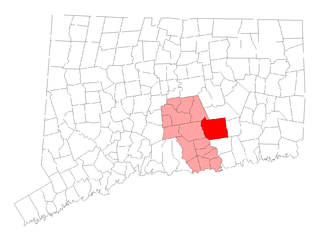
East Haddam is a town in Middlesex County, Connecticut. The population was 8,875 at the time of the 2020 census.

Moodus is a village in the town of East Haddam, Connecticut, United States. The village is the basis of a census-designated place (CDP) of the same name. The population of the CDP was 1,413 according to the census of 2010.

Nathan Hale was an American Patriot, soldier and spy for the Continental Army during the American Revolutionary War. He volunteered for an intelligence-gathering mission in New York City but was captured by the British and executed. Hale is considered an American hero and in 1985 was officially designated the state hero of Connecticut.
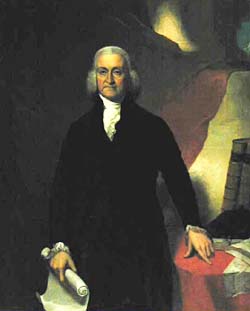
Jonathan Trumbull Sr. was an American politician and statesman who served as Governor of Connecticut during the American Revolution. Trumbull and Nicholas Cooke of Rhode Island were the only men to serve as governor of both a British colony and an American state, and he was the only governor to take up the Patriot cause at the start of the Revolutionary War. Trumbull College at Yale University, the town of Trumbull, Connecticut, Trumbull County, Ohio, and Jonathan the Husky are all named for him.

Joseph Spencer was an American lawyer, soldier, and statesman from Connecticut. During the Revolutionary War, he served both as a delegate to the Continental Congress and as a major general in the Continental Army.
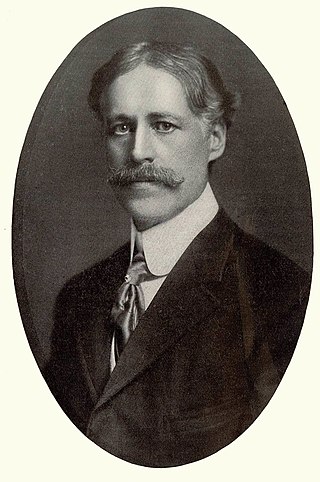
William Ordway Partridge was an American sculptor, teacher and author. Among his best-known works are the Shakespeare Monument in Chicago, the equestrian statue of General Grant in Brooklyn, the Pietà at St. Patrick's Cathedral in Manhattan, and the Pocahontas statue in Jamestown, Virginia.

Samuel Seabury was the first American Episcopal bishop, the second Presiding Bishop of the Episcopal Church in the United States of America, and the first Bishop of Connecticut. He was a leading Loyalist in New York City during the American Revolution and a known rival of Alexander Hamilton.

Benjamin Tallmadge was an American military officer, spymaster, and politician. He is best known for his service as an officer in the Continental Army during the American Revolutionary War. He acted as leader of the Culper Ring during the war, a celebrated network of spies in New York where major British forces were based. He also led a successful raid across Long Island that culminated in the Battle of Fort St. George. After the war, Tallmadge was elected to the US House of Representatives as a member of the Federalist Party.

Bela Lyon Pratt was an American sculptor from Connecticut.
Nathan Hale was an American Revolutionary War officer who fought in the Battle of Lexington and Concord, Battle of Bunker Hill, Siege of Fort Ticonderoga, and Battle of Hubbardton. Hale was taken prisoner by the British at Hubbardton and died in prison on September 23, 1780 at New Utrecht, Brooklyn, New York.
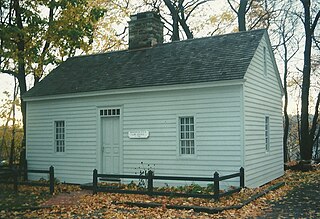
Mill Hill Historic Park in Norwalk, Connecticut is a living history museum composed of three buildings: the circa 1740 Governor Thomas Fitch IV "law office", the circa 1826 Downtown District Schoolhouse, and the 1835 Norwalk Town Hall; as well as a historic cemetery also called the Town House Hill Cemetery. The museum is also known as the Mill Hill Historical Complex in some references and the sign at the parking lot reads Norwalk Mill Hill Museum.
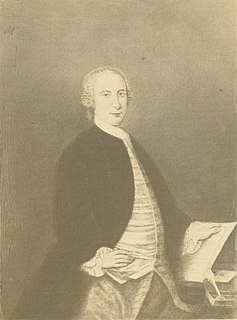
James Beekman (1732–1807) was a New York City merchant and a member of the prominent Beekman family.

Machimoodus State Park is a public recreation area located on the Salmon River near the village of Moodus in the town of East Haddam, Connecticut. The state park is bordered by Sunrise State Park to the north and by the Salmon River and Salmon Cove to the west and south. The park is managed by the Connecticut Department of Energy and Environmental Protection.

The Butler-McCook Homestead is a historic house museum at 396 Main Street in Hartford, Connecticut. Built in 1782, it is one of the city's few surviving 18th-century houses. It was listed on the National Register of Historic Places in 1971. It is now operated as the Butler-McCook House & Garden by Connecticut Landmarks.

The Amasa Day House is a historic house museum at 33 Plains Road in the Moodus village of East Haddam, Connecticut. Built in 1816, it is one of the oldest buildings in the village of Moodus, and a fine example of Federal period architecture. The house, now owned and operated by Connecticut Landmarks, has displays which showcase how the Industrial Revolution changed the daily life of American families. It was listed on the National Register of Historic Places in 1972.

East Hampton is a town in Middlesex County, Connecticut, United States. The population was 12,717 at the 2020 census. The town center village is listed as a census-designated place (CDP). East Hampton includes the boroughs of Cobalt, Middle Haddam, and Lake Pocotopaug.

Connecticut Landmarks is a non-profit organization that has restored and operates significant historic house museums in Connecticut. Headquartered in Hartford, Connecticut, the organization was founded in 1936 as the Antiquarian & Landmarks Society. Connecticut Landmarks currently owns a statewide network of historic properties that span four centuries of history. The organization's mission is to "use historic properties to inspire an understanding of our complex past. The organization's vision is to have "A state whose understanding of its diverse past inspires its people to move forward together as one." The organization is part of the International Coalition of Sites of Conscience.
Erastus Wolcott (1722–1793) was an American politician and a Connecticut state militia commander during the American Revolutionary War. He served in the Connecticut General Assembly for over twenty years and was a justice of the Connecticut Supreme Court from 1789 to 1792.
John Palsgrave Wyllys (1754-1790) was a United States Army officer from Connecticut. Wyllys was the son of George Wyllys and Mary Woodbridge, and the youngest brother of Samuel Wyllys. He graduated from Yale College with Nathan Hale.



















